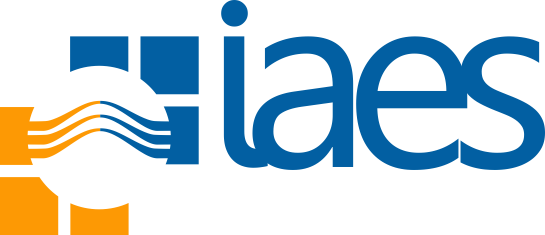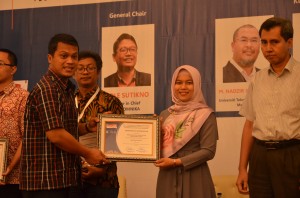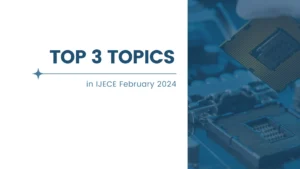The Web of Science (WoS) is a comprehensive and authoritative research database and citation index managed by Clarivate. It is widely used by researchers, academics, and institutions to access scholarly content across various disciplines and to track citations and research impact.
How to Get a Journal Indexed in the Web of Science Core Collection: Updated Guide in 2024
To get a journal indexed in the Web of Science Core Collection, the journal must meet specific criteria and go through a formal evaluation process conducted by Clarivate, the company that manages Web of Science. Here’s an updated guide for 2024:
1. Understand the Web of Science Core Collection
The Web of Science Core Collection includes several indexes:
- Science Citation Index Expanded (SCIE): Covers over 9,200 journals across 178 scientific disciplines.
- Social Sciences Citation Index (SSCI): Covers over 3,400 journals across 58 social sciences disciplines.
- Arts & Humanities Citation Index (AHCI): Covers over 1,800 journals in the arts and humanities.
- Emerging Sources Citation Index (ESCI): Includes high-quality, peer-reviewed publications of regional importance and in emerging research areas.
2. Ensure Basic Journal Requirements
Before submitting, ensure your journal meets these fundamental requirements:
- Peer Review: The journal must follow a peer-review process for evaluating submissions.
- Publishing Ethics: The journal should adhere to ethical publishing practices as outlined by COPE (Committee on Publication Ethics).
- Content: Articles should be in English or include English abstracts, and the journal should have a clear focus and scope relevant to its field.
- Regular Publication: The journal must publish issues on a regular schedule, with a minimum publication frequency (typically quarterly).
- Editorial Board: A diverse and qualified editorial board is essential.
3. Technical Requirements
- ISSN: The journal must have an International Standard Serial Number (ISSN).
- DOI: Assigning Digital Object Identifiers (DOIs) to articles is recommended.
- Online Presence: The journal should have a functional and professional website.
- Archiving: The journal must have a long-term digital archiving policy, such as using services like LOCKSS or Portico.
4. Quality Indicators
Clarivate evaluates journals based on several quality indicators:
- Editorial Content: Original research articles are preferred over review articles, letters, etc.
- International Diversity: Contributions and citations from international authors and editors.
- Citation Impact: Although not mandatory for ESCI, it’s essential for SCIE, SSCI, and AHCI.
- Timeliness: Consistent publishing schedule without significant delays.
- Access and Distribution: Availability in multiple databases and accessible to a broad audience.
5. Application Process
- Pre-Submission Preparation: Ensure all journal issues are up-to-date and online. Prepare detailed information about your journal, including the scope, editorial board, peer-review process, publication ethics, and digital archiving.
- Submission: Use the Web of Science Journal Evaluation Form available on the Clarivate website. You’ll need to provide comprehensive information about your journal.
6. Post-Submission Process
- Initial Screening: Clarivate will conduct an initial screening to check if your journal meets the basic requirements.
- Editorial Triage: A more detailed evaluation by editorial experts will follow.
- Technical Evaluation: Includes checks for plagiarism, citation patterns, and the quality of editorial work.
- Decision: If the journal meets all criteria, it will be indexed in the appropriate collection. You will be informed about the decision and any recommendations for improvement.
7. Continuous Evaluation
- Indexed journals are continuously monitored to ensure they maintain the standards. Failing to do so may result in delisting.
8. Tips for a Successful Application
- Stay Transparent: Clearly define your journal’s aims, scope, and peer-review process on your website.
- Maintain Quality: Ensure high-quality content and editorial standards.
- Engage Internationally: Diversify your editorial board and author base to include international perspectives.
- Ensure Accessibility: Make your journal easily accessible to researchers and libraries.
Additional Resources
- Clarivate’s Journal Submission Process and Criteria: Regularly review the guidelines and criteria on the Clarivate website as they are subject to updates.
- COPE Membership: Joining COPE can help demonstrate your commitment to ethical publishing.
By following this guide, you can improve your chances of having your journal indexed in the Web of Science Core Collection. Regularly review and update your practices to meet evolving standards and criteria.
Why apply to add journals to the WoS Core Collection
Applying to add journals to the Web of Science (WoS) Core Collection offers several significant benefits for both the journal and the broader academic community. Here are key reasons why publishers and editors might seek inclusion:
1. Increased Visibility and Credibility
- Global Recognition: Being indexed in the WoS Core Collection signals that the journal meets high standards of quality, thereby enhancing its reputation and credibility within the academic community.
- Enhanced Discoverability: Inclusion ensures that the journal’s articles are more easily discoverable by researchers worldwide, leading to increased readership and citations.
2. Attracting High-Quality Submissions
- Author Incentive: Researchers prefer submitting to journals indexed in prestigious databases like WoS because it enhances the visibility and impact of their work.
- Improved Content Quality: High visibility attracts better quality manuscripts, which can raise the overall standard of the journal.
3. Impact and Metrics
- Impact Factor: Journals in the WoS Core Collection are eligible to receive an Impact Factor, a key metric used by researchers and institutions to gauge the influence and quality of a journal.
- Citation Analysis: Detailed citation data provided by WoS helps in understanding the impact and reach of the journal’s articles.
4. Institutional Benefits
- Library Collections: Many academic libraries prioritize subscriptions to journals indexed in WoS, ensuring wider institutional access.
- Research Evaluation: Universities and research institutions often use WoS metrics for evaluating the performance and impact of their researchers and publications.
5. Funding and Grants
- Research Funding: Many funding agencies and grant providers prefer or require publication in indexed journals for funding eligibility, helping authors secure financial support for their research.
- Compliance: Inclusion can help journals meet the requirements of various research assessment exercises and funding bodies.
6. Network and Collaboration Opportunities
- International Collaboration: Indexed journals are more likely to attract international authors, reviewers, and editors, fostering global collaborations and networking opportunities.
- Conference Participation: Being indexed can lead to invitations to participate in academic conferences and symposia, further promoting the journal.
7. Professional Development
- Editorial Prestige: Editors and reviewers associated with indexed journals can benefit from enhanced professional standing and career development opportunities.
- Training and Workshops: Indexed journals often receive invitations to training and workshops on best practices in publishing and editorial management.
8. Quality Assurance
- Continuous Improvement: The rigorous evaluation process for WoS encourages journals to continually improve their editorial practices, peer-review processes, and overall quality.
- Ethical Standards: Adherence to high ethical standards in publishing, as required by WoS, ensures the integrity and reliability of the journal.
9. Competitive Advantage
- Market Positioning: Being indexed in WoS sets the journal apart from numerous others that are not indexed, giving it a competitive edge in the academic publishing market.
- Subscription and Revenue: Increased visibility and credibility can lead to higher subscription rates and, potentially, increased revenue from institutional and individual subscribers.
Conclusion
The decision to apply for inclusion in the Web of Science Core Collection is driven by the numerous advantages it offers in terms of visibility, credibility, impact, and professional growth. It signifies a commitment to maintaining high standards and contributes significantly to the journal’s and its contributors’ success in the academic community.
WoS Core Collection indexing criteria
To get a journal indexed in the Web of Science (WoS) Core Collection, it must meet several criteria set by Clarivate. These criteria ensure the quality, relevance, and integrity of the journals included. Here’s a detailed look at the key criteria:
1. Editorial Quality
Peer Review Process:
- The journal must have a clearly described and rigorous peer-review process to ensure the quality and credibility of the published research.
Editorial Board:
- The journal should have a recognized and well-qualified editorial board with a diverse group of experts in the relevant field.
Ethical Standards:
- Adherence to ethical publishing practices is essential. This includes clear policies on plagiarism, conflicts of interest, and corrections/retractions.
2. Content
Originality and Relevance:
- The journal should publish original and significant research that contributes to the field of study.
Content Diversity:
- The journal should cover a broad range of topics within its scope and include a mix of article types (e.g., research articles, reviews).
Timeliness:
- The journal should have a regular publication schedule without significant delays.
3. Technical Specifications
ISSN:
- The journal must have an International Standard Serial Number (ISSN), which is a unique identifier for serial publications.
Digital Object Identifiers (DOIs):
- It is recommended that the journal assigns DOIs to articles to ensure persistent and reliable access to content.
Online Presence:
- The journal must have a professional and functional website with accessible content, submission guidelines, and editorial policies.
4. Journal Standing
Citation Impact:
- While not strictly necessary for the Emerging Sources Citation Index (ESCI), citation metrics and impact factors are crucial for inclusion in the Science Citation Index Expanded (SCIE), Social Sciences Citation Index (SSCI), and Arts & Humanities Citation Index (AHCI).
International Diversity:
- The journal should demonstrate international diversity in its authorship, editorial board, and readership to show its global relevance.
Academic Influence:
- The journal should be cited by other reputable journals, indicating its influence and standing in the academic community.
5. Bibliographic Information
Abstracting and Indexing:
- The journal should be indexed in other recognized bibliographic databases, which enhances its visibility and credibility.
Referencing Standards:
- The journal must follow high standards in referencing and citations to ensure academic rigor and reliability.
6. Operational Stability
Regular Publication:
- The journal must demonstrate operational stability with a consistent publication record over time.
Archiving Policy:
- The journal should have a robust digital archiving policy, ensuring long-term access to its content through services like LOCKSS, CLOCKSS, or Portico.
7. Compliance and Ethical Practices
Adherence to Ethical Guidelines:
- The journal must adhere to ethical guidelines for publishers, such as those provided by the Committee on Publication Ethics (COPE).
Transparency:
- The journal should maintain transparency in its operations, including clear information on its website about editorial policies, peer-review process, and publication fees (if any).
Specific Criteria for Each Index
- Science Citation Index Expanded (SCIE): Focus on journals with significant citation impact in the sciences.
- Social Sciences Citation Index (SSCI): Emphasis on journals that make substantial contributions to the social sciences.
- Arts & Humanities Citation Index (AHCI): Inclusion of journals that significantly impact the arts and humanities fields.
- Emerging Sources Citation Index (ESCI): Inclusion of high-quality, peer-reviewed publications of regional importance and in emerging research areas.
Application and Evaluation Process
- Submission: Submit the journal for evaluation via the Web of Science Journal Evaluation Form on the Clarivate website.
- Initial Screening: Clarivate conducts an initial screening to ensure the journal meets the basic requirements.
- Editorial Evaluation: Detailed review by editorial experts considering the quality of content, editorial standards, and citation metrics.
- Technical Review: Evaluation of the technical quality, including website functionality, archiving policies, and DOI assignment.
- Decision: Clarivate informs the journal about the outcome and any recommendations for improvement if necessary.
By adhering to these criteria, journals can enhance their chances of being indexed in the Web of Science Core Collection, thereby increasing their visibility, credibility, and impact within the academic community.
The WoS Core Collection application process
The process to apply for a journal to be indexed in the Web of Science (WoS) Core Collection involves several steps. Here’s a detailed guide on the application process:
1. Preparation Before Submission
Review Requirements and Criteria:
- Familiarize yourself with the detailed criteria for each specific index within the WoS Core Collection (e.g., SCIE, SSCI, AHCI, ESCI).
Ensure Compliance:
- Verify that your journal meets all the necessary technical, editorial, and ethical standards. This includes having an ISSN, a proper peer-review process, a diverse and qualified editorial board, and a clear publishing schedule.
Gather Documentation:
- Prepare all necessary documentation that will be required during the application process. This includes information on the journal’s editorial policies, peer-review process, ethical standards, archiving policy, and a list of editorial board members.
2. Application Submission
Access the Submission Form:
- Go to the Clarivate website and locate the Web of Science Journal Evaluation Form.
Complete the Form:
- Provide detailed information about your journal, including:
- Journal title and ISSN
- Publisher information
- Editorial board details
- Description of the peer-review process
- Ethical policies and guidelines
- Publication schedule
- Archiving policies
- Details on how your journal ensures international diversity in authorship and editorial board
- Examples of recent issues and representative articles
Submit Supporting Materials:
- You may need to submit recent issues of the journal, representative articles, or additional documentation to support your application.
3. Initial Screening
Basic Compliance Check:
- Clarivate performs an initial screening to ensure that the journal meets the basic criteria, such as having an ISSN and a functioning website with accessible content.
4. Editorial Evaluation
Quality of Content:
- Editorial experts review the quality of the journal’s content, including the originality and significance of the published research.
Editorial Standards:
- Evaluation of the journal’s editorial policies, the qualifications of the editorial board, and the effectiveness of the peer-review process.
Ethical Practices:
- Verification of adherence to ethical publishing practices, such as those outlined by the Committee on Publication Ethics (COPE).
5. Technical Review
Website Functionality:
- Assessment of the journal’s website for ease of use, accessibility of content, and availability of necessary information for authors and readers.
DOI and Archiving:
- Review of the journal’s use of Digital Object Identifiers (DOIs) and its digital archiving policies to ensure long-term access to content.
6. Citation Analysis
Impact and Relevance:
- Analysis of citation metrics to evaluate the journal’s impact and relevance within its field. This is particularly important for inclusion in SCIE, SSCI, and AHCI.
International Diversity:
- Assessment of the journal’s international diversity in terms of authorship, editorial board, and citation patterns.
7. Decision and Notification
Evaluation Outcome:
- Clarivate will inform the journal of the evaluation outcome. This includes whether the journal has been accepted for indexing or if further improvements are required.
Feedback:
- If the journal is not accepted, detailed feedback will be provided on areas that need improvement. This allows the journal to address these issues and reapply in the future.
8. Post-Acceptance
Indexing and Monitoring:
- Once accepted, the journal is indexed in the appropriate WoS Core Collection. The journal will be subject to continuous monitoring to ensure ongoing compliance with WoS standards.
Regular Updates:
- The journal should continue to maintain high standards and make any necessary improvements to stay compliant with the evolving criteria of the WoS Core Collection.
Summary
- The application process for indexing in the WoS Core Collection is thorough and rigorous, designed to ensure that only high-quality, impactful journals are included. By carefully preparing your submission, adhering to best practices in academic publishing, and continuously striving to meet high standards, you can improve your chances of successful indexing.
What to do if your first application isn’t accepted
If your first application for indexing in the Web of Science (WoS) Core Collection isn’t accepted, don’t be discouraged. Here’s what you can do to improve your chances for future applications:
1. Review Feedback
Understand Reasons for Rejection:
- Carefully review the feedback provided by Clarivate regarding the reasons for rejection. Understanding these reasons is crucial for addressing any deficiencies in your journal.
Identify Areas for Improvement:
- Identify specific areas where your journal fell short of the criteria for indexing. This could include editorial processes, content quality, technical specifications, or ethical standards.
2. Address Deficiencies
Editorial Process:
- Strengthen your peer-review process to ensure rigorous evaluation of submitted manuscripts. Consider involving experts in the field as reviewers and editors.
Content Quality:
- Focus on publishing high-quality, original research that significantly contributes to the field. Ensure that published articles meet the highest standards of scholarship and relevance.
Technical Specifications:
- Improve the functionality and user-friendliness of your journal’s website. Ensure easy access to content, clear submission guidelines, and transparent editorial policies.
Ethical Standards:
- Reinforce your journal’s commitment to ethical publishing practices. Provide clear guidelines on authorship, conflicts of interest, plagiarism, and corrections/retractions.
3. Seek Professional Advice
Consult Experts:
- Consider seeking advice from experienced academic publishers, editors, or consultants who can provide insights into improving your journal’s chances of acceptance.
Join Industry Organizations:
- Joining industry organizations such as the Committee on Publication Ethics (COPE) can provide valuable resources and guidance on best practices in academic publishing.
4. Make Necessary Changes
Implement Recommendations:
- Based on the feedback received and your own assessment, make necessary changes to your journal’s policies, processes, and content.
Document Improvements:
- Document the improvements made to address the issues identified in the initial application. Provide evidence of these improvements in your subsequent application.
5. Reapply
Reevaluate Readiness:
- Before reapplying, ensure that your journal meets all the criteria and requirements for indexing in the WoS Core Collection.
Submit Revised Application:
- Submit a revised application, clearly outlining the changes made and improvements implemented since the initial application.
Monitor Progress:
- Stay informed about the status of your application and be prepared to provide additional information or address any further concerns raised during the review process.
6. Continuous Improvement
Stay Committed to Quality:
- Continuously strive to maintain and improve the quality of your journal. Regularly assess and update editorial processes, content policies, and technical infrastructure.
Engage with the Academic Community:
- Foster collaboration and engagement with authors, reviewers, and readers to ensure that your journal remains relevant and impactful within its field.
By taking these steps, you can increase the likelihood of success with your subsequent application for indexing in the Web of Science Core Collection. Remember that the process may require time and persistence, but the ultimate goal is to enhance the visibility and impact of your journal within the academic community.
Conclusion
In conclusion, applying for indexing in the Web of Science (WoS) Core Collection is a rigorous process that requires careful preparation, adherence to high standards, and a commitment to continuous improvement. While acceptance may not be guaranteed on the first attempt, it’s essential to view feedback constructively, identify areas for enhancement, and take proactive steps to address deficiencies.
By focusing on editorial quality, content relevance, technical specifications, and ethical standards, journals can strengthen their applications and improve their chances of acceptance in subsequent submissions. Seeking professional advice, joining industry organizations, and engaging with the academic community can provide valuable support and guidance throughout the process.
Persistence, dedication, and a commitment to excellence are key to achieving success in the indexing process. By continuously striving for improvement and maintaining a strong focus on quality, journals can enhance their visibility, credibility, and impact within the academic community, ultimately contributing to the advancement of knowledge in their respective fields.





